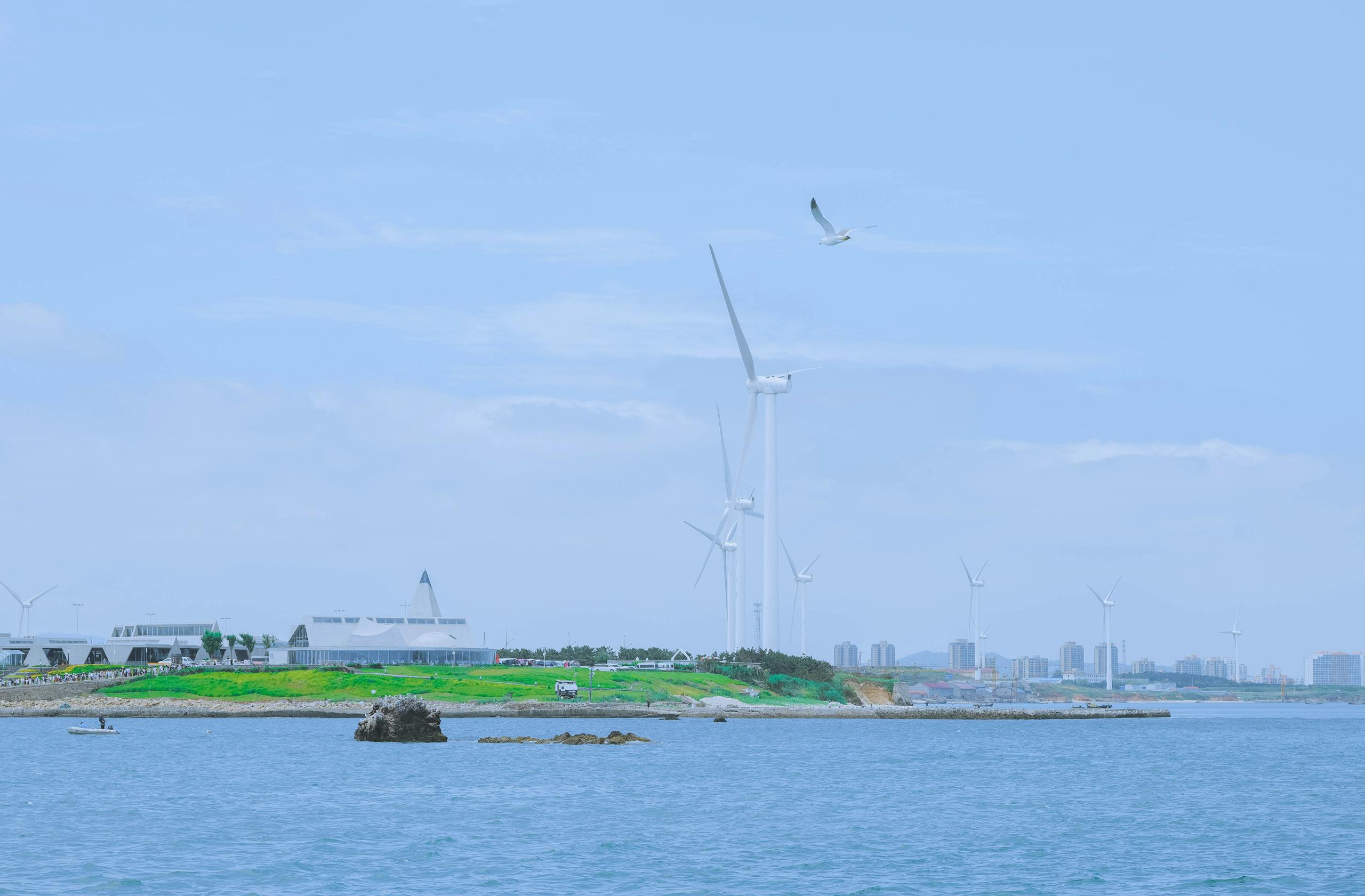What is renewable energy? A simple explanation of the advantages and disadvantages!
Attention is being drawn to “renewable energy” as environmental consciousness rises. Despite the widespread perception that renewable energy is “environmentally friendly,” there are benefits and drawbacks to its introduction.

But it’s true that there are limited fossil fuel resources in the world today, thus encouraging the development of renewable energy is crucial. Why is renewable energy becoming more and more important?
We will go over the fundamentals of renewable energy in this post, along with the significance of its introduction and its benefits and drawbacks.
What is renewable energy?
Energy that never runs out and can be utilised repeatedly is called renewable energy.
Fossil fuels, including coal, natural gas, and other fuels, currently constitute Japan’s primary energy sources.
These fossil fuels do, however, have finite reserves, and they are anticipated to run out soon.
In addition, burning fossil fuels releases a lot of CO2, which contributes to global warming. These factors have led to a rise in the demand for renewable energy sources that don’t release greenhouse gases.
This is the reason for the increased interest in renewable energy. Renewable energy supplies, in contrast to fossil fuels, have no finite supply and can be replenished rather quickly, allowing for endless use.
List of renewable energy types
The definition of renewable energy under the Energy Supply Structure Sophistication Act is “solar, wind, and other non-fossil energy sources that are designated by government ordinance as being capable of being used permanently as energy sources.” The following are the particular types:
Solar power:
Utilising dead space, such as rooftops and empty lots, power is produced by subjecting silicon semiconductors to sunlight.
Wind-powered energy production:
Windmills are turned by the wind to produce electricity. It has a high power generating efficiency and can be operated on a big scale.
Hydroelectric power :
The force of the falling water spins a windmill to generate electricity, allowing for stable power generation regardless of the weather or climate.
Biomass Power Generation :
This is a method of using waste materials such as livestock manure and wood as fuel to turn a turbine. It is a type of thermal power generation, but since biomass fuel absorbs the same amount of CO2 as it emits when burned, it can be considered a renewable energy source.
Geothermal Power Generation:
Power is generated using steam generated by the heat of magma, allowing for continuous, uninterrupted power generation.
Solar heat utilisation:
Solar thermal energy is collected by a collector and used for hot water and heating. It is highly energy efficient and can be installed even in small homes.
Snow and ice heat utilisation:
Snow and ice are stored in the winter and used as a cold source for air conditioners and food refrigeration in the summer, making effective use of snow and ice that has previously been removed at great expense.
Why renewable energy is important
In Japan, the introduction of renewable energy is being promoted nationwide. There are two main reasons why renewable energy is being emphasised.
Because it is effective in reducing CO2 emissions
Firstly, since renewable energy sources don’t release carbon dioxide, they have a great chance of reducing global warming.

From about 21 billion tons in 1990 to about 32 billion tons in 2018, Japan’s total CO2 emissions have increased. With the energy conversion sector accounting for approximately 40% of this, there are growing expectations for renewable energy sources that do not emit CO2.
For example, in coal-fired power generation, the CO2 emissions from burning fuel are 943g-CO2/kWh, whereas in renewable energy, the emissions are only 11-38g-CO2/kWh, which is a very small amount emitted from facility operation. If we could replace the current main source of power generation from fossil fuels with renewable energy, it would be possible to significantly reduce CO2 emissions, which could lead to a reduction in global warming.
Because it is effective in improving energy self-sufficiency
As of 2018, Japan ranked 34th out of 35 OECD (Organization for Economic Cooperation and Development) countries with a much lower energy self-sufficiency rate of 11.8%. Prior to the 1960s, Japan was able to meet 58.1% of its primary energy needs with its own natural resources; however, as the country started importing large amounts of fossil fuels, its energy self-sufficiency rate fell sharply.
More reliance on fossil fuels was created, in particular, by the Great East Japan Earthquake, which momentarily stopped producing nuclear electricity. The energy supply is reliant on fossil fuels at 88.3% as of 2019.
Natural resources like sunshine and geothermal energy can be used to generate renewable energy. It is anticipated to present Japan, which has limited domestic energy resources, with a chance to increase energy self-sufficiency.
The benefits of renewable energy
A few other advantages of employing renewable energy are:
Permanently available
Renewable energy, as previously noted, makes use of natural resources including sun, wind, and geothermal energy. It is therefore easy to secure as a resource and does not run out like fossil fuels do.
Globally, there is currently an issue with the increasing unpredictability of fossil fuels. Especially concerning are the skyrocketing costs. Natural gas and crude oil prices have skyrocketed in 2021 as global energy consumption has surged as a result of the economy recovering from the COVID-19 pandemic’s economic standstill. A cold wave and growing fuel prices have caused a shortage of electricity in Japan, which has made the topic of discussion.
We can hope to avoid scenarios like this one when power becomes scarce due to global conditions if we can secure a reliable supply of electricity domestically through renewable energy sources.
No SO2 or NOx emissions
In addition to lowering CO2 emissions, renewable energy can help lower acid rain-causing pollutants including sulphur dioxide (SO2) and nitrogen oxides (NOx).
In addition to greenhouse gases like CO2, burning fossil fuels also releases SO2 and NOx. These materials react chemically in the atmosphere, forming nitric acid and sulfuric acid that dissolve into the rain and create “acid rain.” Global reports have been made on issues such soil pollution, deforestation, and acid rain-related changes in river water quality. In the 1970s, a number of issues, including vegetable discoloration and withering, also existed in Japan.
Because they don’t release SO2 or NOx, renewable energy sources that don’t rely on fossil fuels also aid in preventing acid rain.
Disadvantages of renewable energy
However, there are several drawbacks to renewable energy that may prevent it from being widely used. These are the three main ones.
High cost of electricity generation
In contrast to thermal and hydroelectric power generation, a number of renewable energy sources are costly and challenging to use on a big scale.

Natural gas-fired power generation costs 10.7 yen/kWh, home solar power generation costs 17.7 yen/kWh, and offshore wind power generation costs 30.0 yen/kWh, according to cost estimates for each power generation method published by the Agency for Energy and Natural Resources. All power generation methods are therefore more expensive than general electricity.
Still, several affluent nations with higher rates of renewable energy than Japan have managed to bring costs down. Given the implementation of policies to encourage the use of renewable energy, such as a buy system for renewable electricity, there is a chance that costs will decrease in Japan as well in the future.
Energy conversion efficiency is poor
Other than hydroelectric electricity, one problem with renewable energy sources is their inefficiency.
Typical thermal power generation has an energy conversion efficiency of 35–43%; in contrast, wind, solar, and geothermal power generation only have 25%, 10%, and 8% of that efficiency, respectively.
Due to its low power generation efficiency, renewable energy is claimed to be difficult to make the mainstream source of electricity, even though the resources themselves may be secured steadily. Improvements in efficiency are anticipated as technology progresses.
Power generation is affected by weather conditions
They may be used indefinitely and have the benefit of not running out, but they also have the drawback of being readily impacted by weather. Typical examples include solar and wind power, although they suffer from not being able to produce consistent electricity on overcast or wet days or during periods of constant wind.
summary
The usage of renewable energy is desperately needed in today’s world, where worries about the depletion and unpredictability of fossil fuels are growing, despite the obstacles that must be addressed. While there is a national push to introduce renewable energy, it is crucial that everyone of us shift our understanding. Items such as “supporting companies that are working on decarbonization” and “being conscious of saving electricity on a daily basis” are particularly relevant. Why not begin by finding out what you are capable of doing yourself?
GitLab produces articles that educate you about environmental conservation and the SDGs in addition to renewable energy. If you’d want additional information on the daily efforts you may make.







